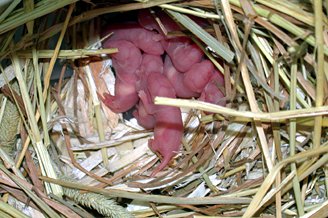Antaresia pythons feeding

In the wild all Antaresia pythons feed on small reptiles (geckos, lizards) and amphibians. This is their premiliraly diet when babies.
Getting bigger, they will go for rodents and birds. They also eat bats.
In captivity, all Antaresia pythons are kept exclusively on rodent diet. Starting with babies, which have to be tricked sometimes to accept
rodents by scenting techniques, all adults will eventually eat adult mice and the spotted pythons will eat small rats.
I would recommend feeding them as much as they want, at roughly scheduled intervals. If the animal refuses to eat, I will just leave it alone.
Kept in the right conditions, they will usually refuse to eat only when in shed. Pregnat females will also not feed. Some male are too reluctant
to accept food in winter. Personally, I never worry if a snake refuses to eat. I give him/her lots of time. Only after a long period of fasting and visible
signs of falling health I feel something might be going wrong. Most snakes will have those spells of fasting though with no ill effects, and will
eventually start feeding again at their own will.

All Antaresia pythons will go through the whole spectrum of adequately sized rodents. These will be
small pinkey mice, fuzzy mice, hoppers and eventually adult mice.

Most adult Antaresia snakes will eat adult mice and small rats (the Spotted pythons). Some will eat 2 - 3 adult mice
at one setting. If you are planning on breeding your snakes, it is imoportant to make sure trhat they ar in a good shape. Don't overfeed them,
but also you have to make sure that they, especially females, will have enough fat and energy to produce eggs.
|
Available pet snakes  |
 None at the moment None at the moment
All 2006 babies are sold! The next breeding season has started and my snakes are mating. Next year I will be
expecting ball pythons, Irian Jaya carpet pythons, Dumeril's boas, blood pythons, Children's pythons,
Kenyan sand boas, spotted pythons and perhaps some others. For availability, check me out often!
|
|
|

